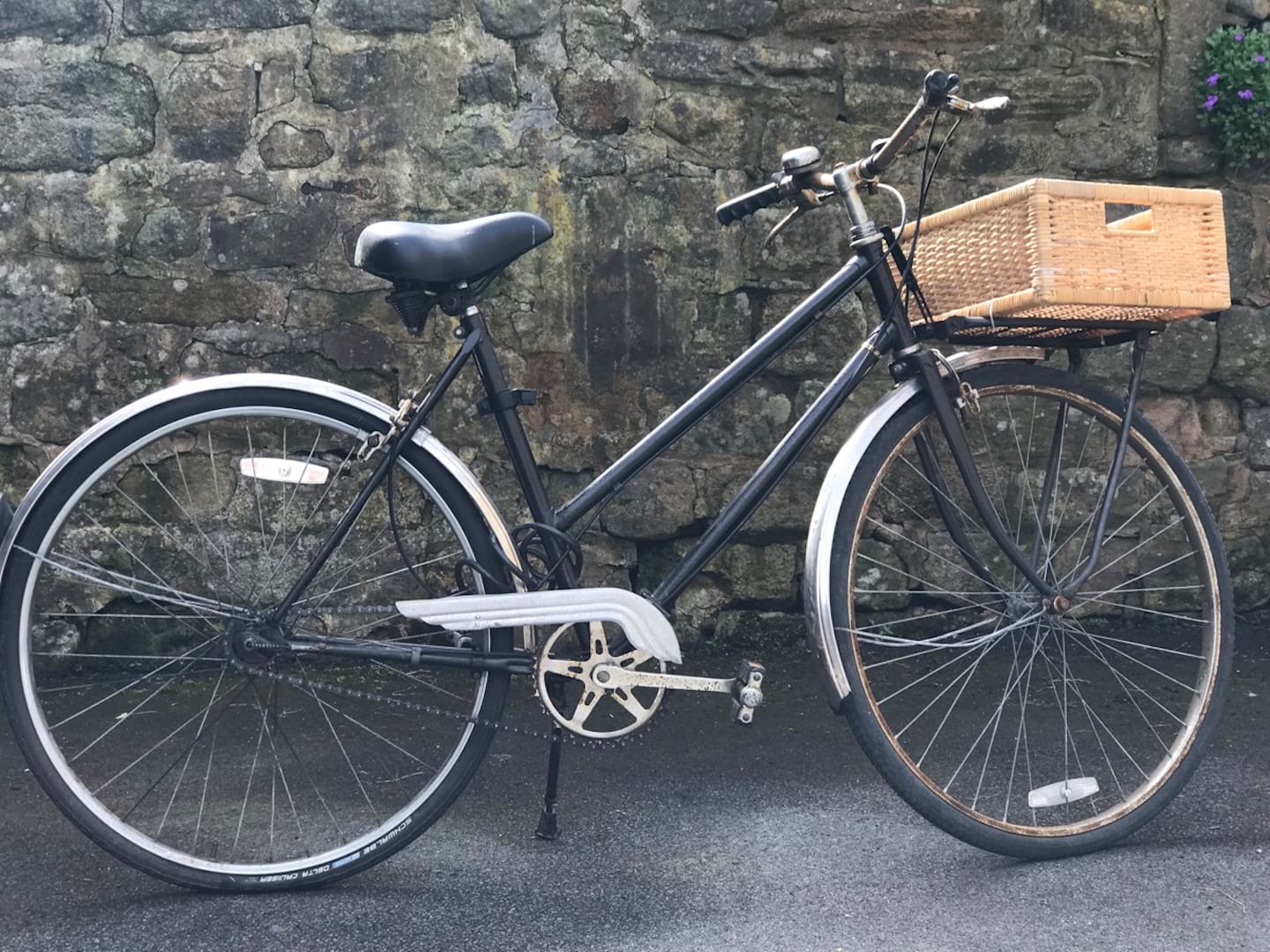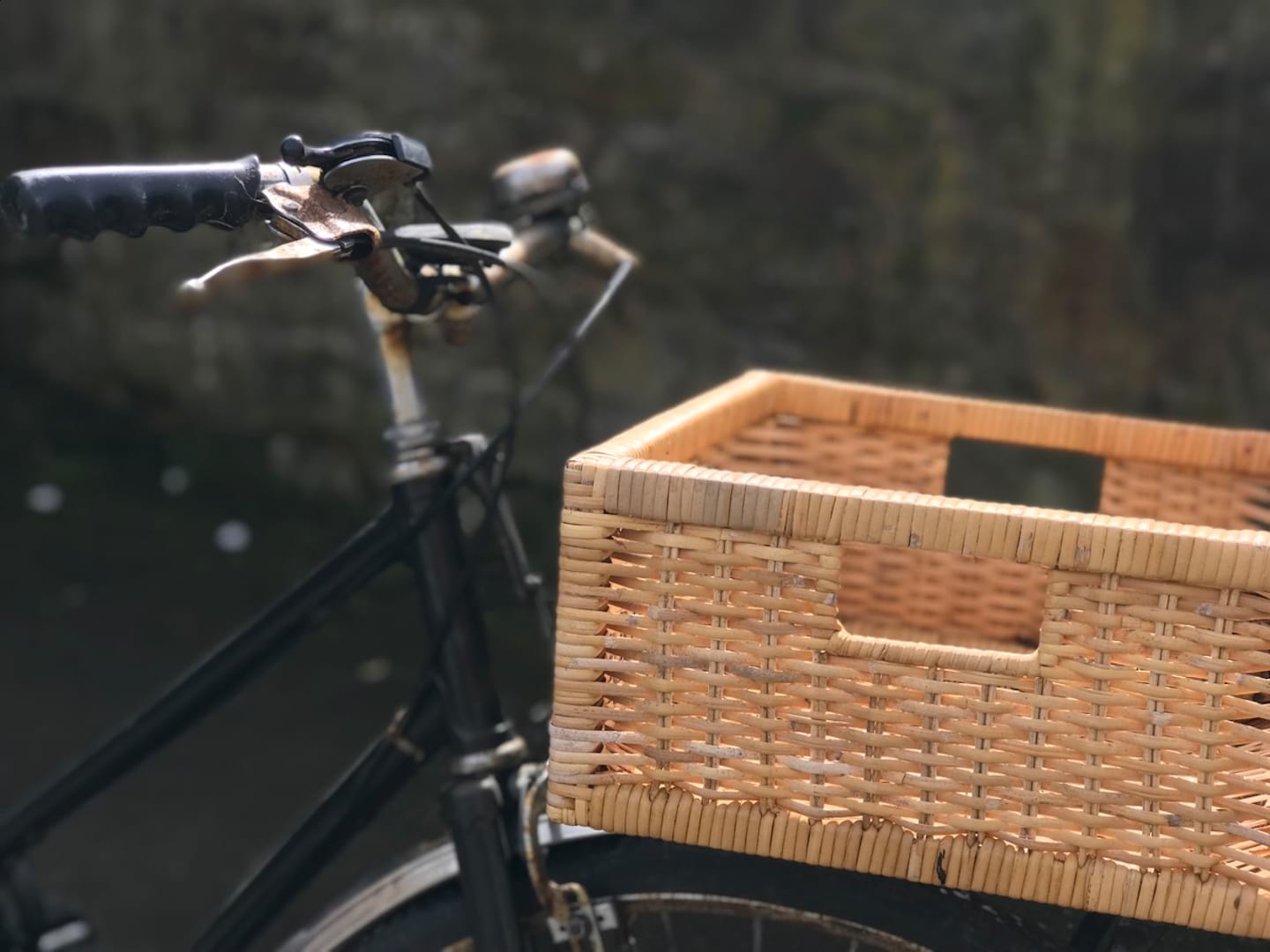Betty was our next-door neighbour. She was the archetypal elderly spinster: she was feisty, she was fiercely independent, and she used her home as a sort of hostel for local stray cats.
One of Betty’s tools of independence was her venerable Raleigh Shopper. Despite having seen better days (and quite a lot of them) it needed only occasional attention from one of her neighbours: a spot of oil and an occasional puncture repair, and this humble contraption was as indefatigable as Betty herself.
The shops were a little over a mile away, and although Betty struggled to walk that sort of distance (let alone while carrying bags of shopping) she could pedal it just fine. The Shopper’s step-through frame meant she could mount it comfortably, and its wire basket carried enough shopping to keep her going for a few days, so it allowed Betty to go about her business not just with relative ease but also with some pleasure, keeping her active in her old age.
Betty had a car as well: a Peugeot which dated from the 1990s but somehow appeared to be competing with the Shopper in terms of apparent age. She rarely used it, though: it was there for visiting friends and relatives in the surrounding villages, not for getting around town.
But there came a tipping point, where Betty decided she could no longer cycle.
What was interesting about this change in behaviour, however, was the reasoning behind it. Betty’s decision was not made on the basis of dwindling health: she was as capable as ever.
Betty told me her reasoning explicitly. She had decided that the roads, which every year carried more and more motor traffic, had become too dangerous for her to cycle on.
And so it was that the Shopper took up permanent residency of the garage, while the Peugeot reluctantly enjoyed a renaissance of sorts as Betty’s main transport.
There was an uncomfortable irony to this decision, which was that Betty was an absolute liability behind the wheel. The Peugeot would be seen lurching haphazardly around the streets, belching out guffs of smoke while its ruddy-faced driver peered intently and constantly ahead.
Driving also seemed to ignite Betty’s feisty side: on one occasion I was the recipient of an angry blast from its horn as I drove too sedately for her liking (she later apologised, saying she only realised it was me afterwards).
Betty had, implicitly but emphatically, followed the mantra of “if you can‘t beat ‘em, join ‘em”. In reducing her perceived exposure to risk, she inadvertently increased everyone else’s: a single decision about personal transport could scarcely have been clearer in its effect.
Crucially, however, whilst that decision had a small (but nonetheless real) effect on the town’s inhabitants it also seemed to have an effect on Betty. From this point on, her health and her mobility declined. Clearly it’s rather convenient to point to a bicycle and a car and state “QED”, but the fact remained that Betty had given up her last bit of exercise and was now almost totally sedentary. Not long afterwards, she had to relocate to a flat in the town centre, where the shops and the public garden she enjoyed were literally next-door.
Some time later, Betty was no longer with us. But she wasn’t forgotten. She was very much in my mind at a recent public forum, where the matter of converting the town centre to a shared space scheme was being discussed.
The thrust of the meeting was that people wanted the town centre to offer greater freedom for pedestrians (a term I’ll return to in a moment), and for the area to be generally more pleasant and less motorised. Full pedestrianisation had been ruled out some time ago, but a shared space scheme had become a commitment, and the task at hand was to help shape what form that space would take.
All the angles came up: pollution, noise, danger, aesthetics, accessibility, the old, the young—you name it—and after discussing matters around tables for an hour (our table being pleasingly, if unexpectedly, progressive in its thinking) the floor was open for discussion.
Entirely predictably, it didn’t take long for “cyclists” to be mentioned and, equally predictably, the level of background chatter rose immediately as a result.
I waited for the speaker to finish and then firmly ensured it was my turn next.
The fundamental problem, I began, was laid bare from the outset on the sheets of paper we had been given: they referred to pedestrians, cyclists and drivers, when the conversation needed to be about walking, cycling and driving (as well as using public transport). The point is that these are all choices which, broadly speaking, are available to everyone.
The general aim of the group was to establish an environment which favoured moving about on foot, where people would be able to move freely and carelessly. However, there is a criterion which must be met in order for this to be achieved: people on foot only feel truly able to behave in this way when the rate of traffic flow is around 90 vehicles per hour or below. (Fortunately we had an experienced and well-informed highway engineer in the room who had already referred to this figure, saving me the need to cite its provenance.)
So, to achieve the desired nature of shared space it is absolutely necessary to reduce and constrain the level of motor traffic in that space. This is no simple task: people will still want and need to visit the town centre, and the shopkeepers in particular are rightly concerned that they should do so.
The task is only hindered by categorising people: few people are purely pedestrians, and none are purely cyclists or drivers. Each of us makes choices, and each of those choices is governed not just by the vehicles in which we may make our journeys but by the environment we must navigate in doing so: the time our journey takes, the risk of harm we face, the financial cost, the ease of parking, and so on.
So it is vital not to simply put up barriers to perceived categories of people, but to engineer a system which—for local journeys at least—encourages more socially benign choices. A system which, to be blunt, more often than not makes the motor car the least appealing option.
As the most socially benign option, walking is a justifiable goal. But we have to remember that, for most people, walking from the outskirts of town into the centre is not an appealing choice even with an accommodating environment: even as a fit and healthy adult it takes half an hour each way, and it’s hard to carry much. But by bicycle or tricycle it takes ten minutes and you can carry some shopping much more easily. Of course many people will still do their weekly shop by car, but that’s fine: such traffic needn’t be routed via the streets under consideration. The aim is to reduce car use, not to eliminate it.
The aim is to have a person choose to get in their car less often.
There exists a spectrum of transport choices: from walking as the most socially benign, through cycling and other unpowered modes such as scooting, to public transport, to private motor vehicles as the most socially harmful. If our aim is to actually achieve an unpolluted, quiet and safe public space, rather than simply to produce an artist’s impression of it, then it is necessary to accept that we must gently nudge people along that spectrum: attempting to simply drag them kicking and screaming from one end of it to the other does not work.
This in turn involves the acceptance of pedal cycles and (including electrically assisted ones) as a key enabler in giving people enough convenience for many trips without generating most of the harmful effects that are inherent in motorised transport.
The aim is not to transform a driver into a cyclist or a pedestrian; such a notion is absurd. The aim is to have a person choose to get in their car less often.
So we must understand that we are all capable of finding ourselves at a tipping point where, for some of our journeys, we stop choosing one mode of transport and start choosing another. If we can understand that, and the nuances of how and why those choices are made, then we can achieve the aims of even the people who start muttering when anyone mentions “cyclists”.
There were nods around the room as I spoke, and the next speaker gave their vocal support.
The message can get through. It just needs to be delivered in a rusty basket on the back of an elderly lady’s Raleigh Shopper.








Another great and well written article.
As pmurden said. I wish the villages/towns in the North East of Scotland would have a similar conversation about making the centres more people friendly. Car is definitely king here.
Really great article. Car is king everywhere we need to push the agenda use your vote to make a change.
An excellent article. I hope more towns and cities take this approach, and hopefully the general public will be a bit more receptive too.
great piece – the quote below absolutely nails it. So much of the debate is clouded by trying to pigeon-hole the individuals into a single mode of transport.
“they referred to pedestrians, cyclists and drivers, when the conversation needed to be about walking, cycling and driving (as well as using public transport). The point is that these are all choices which, broadly speaking, are available to everyone.”